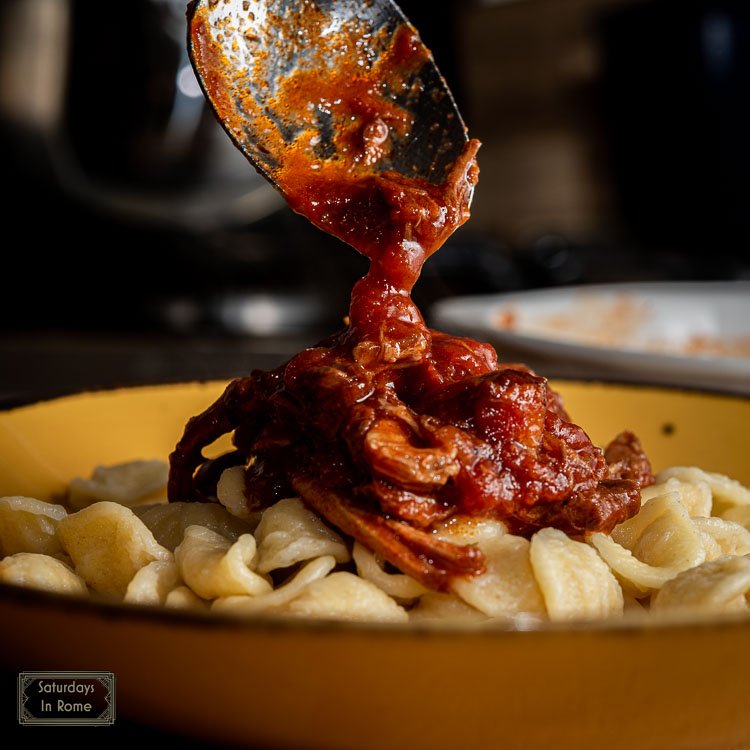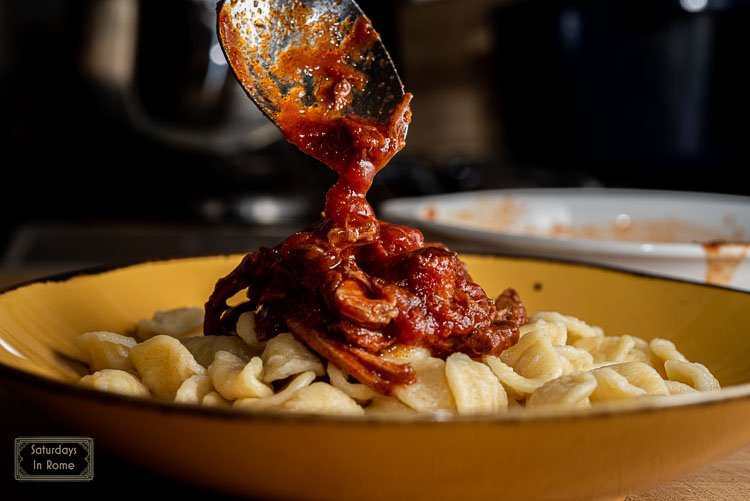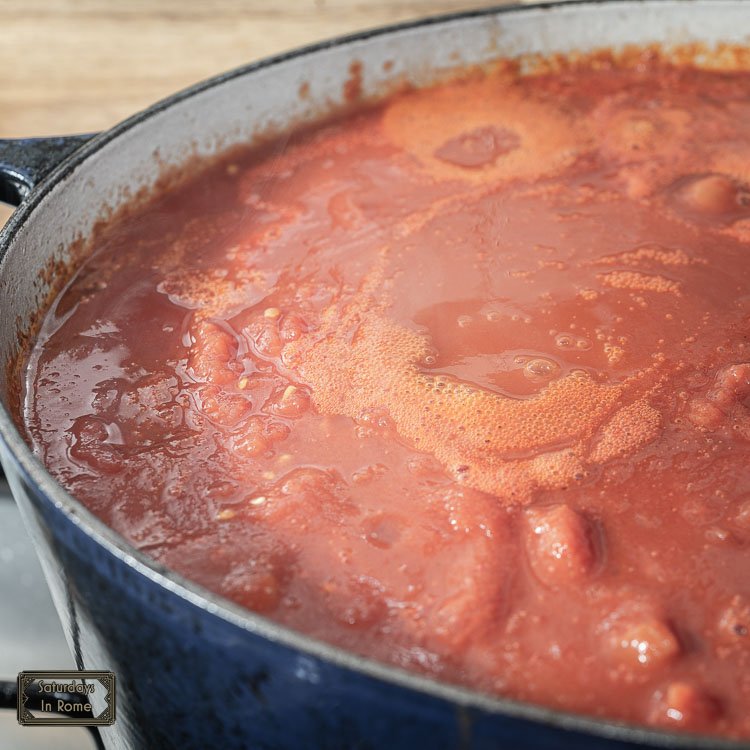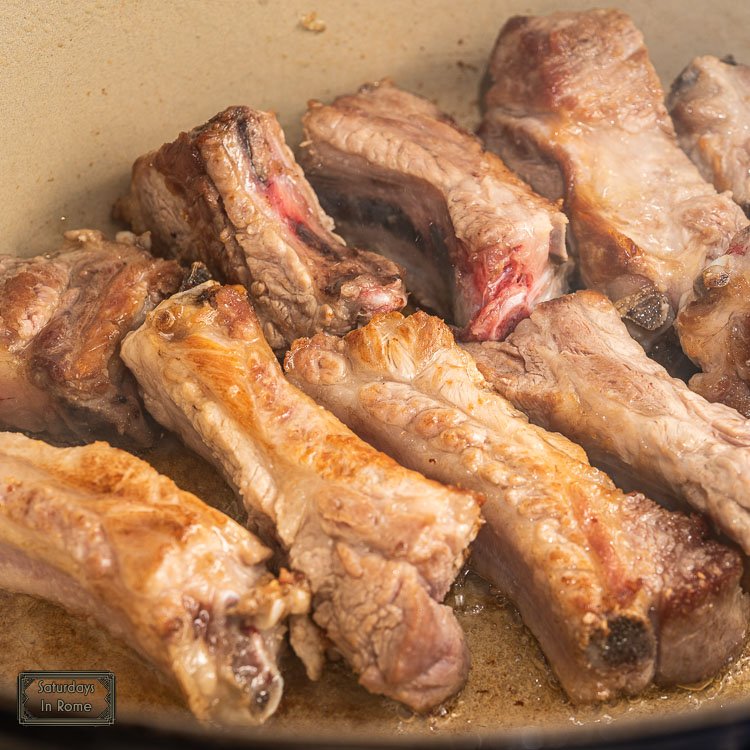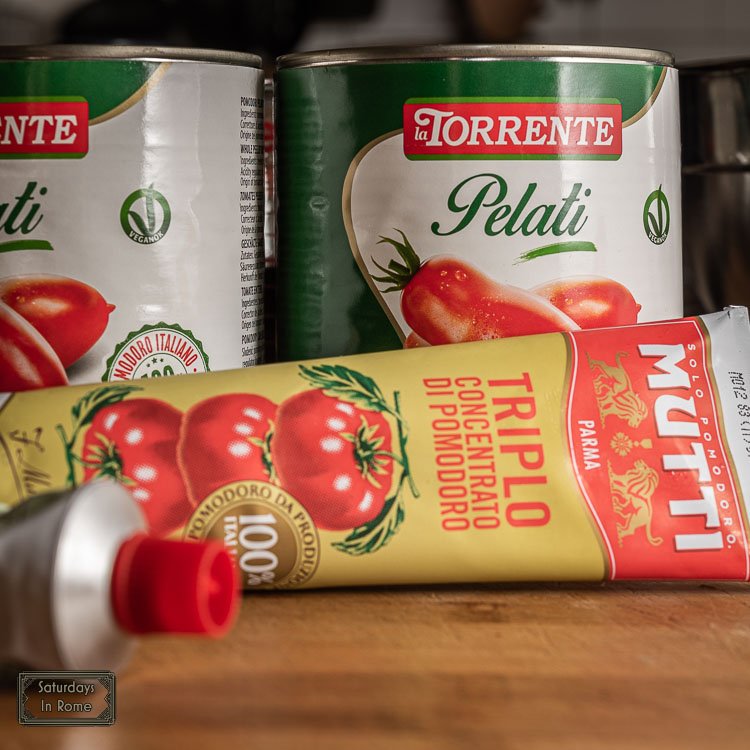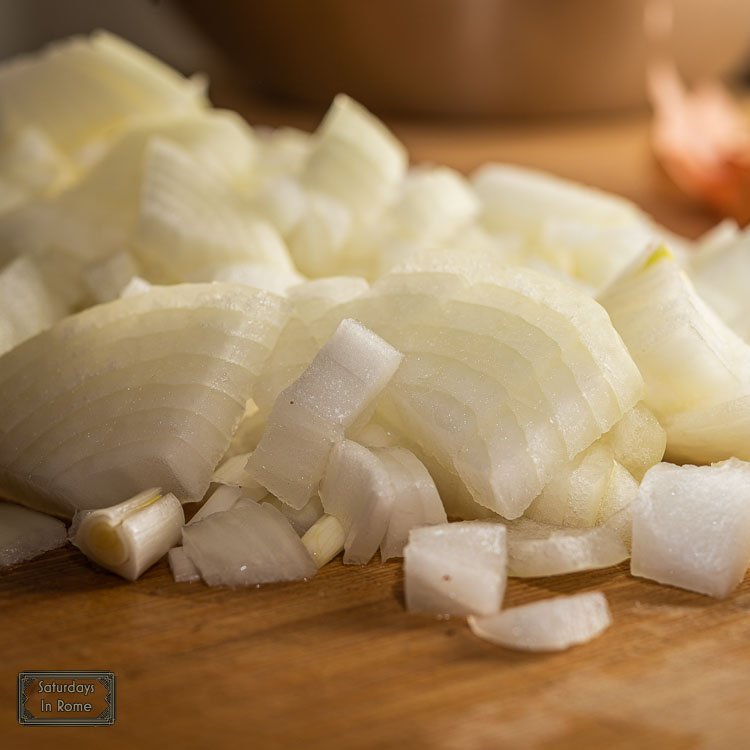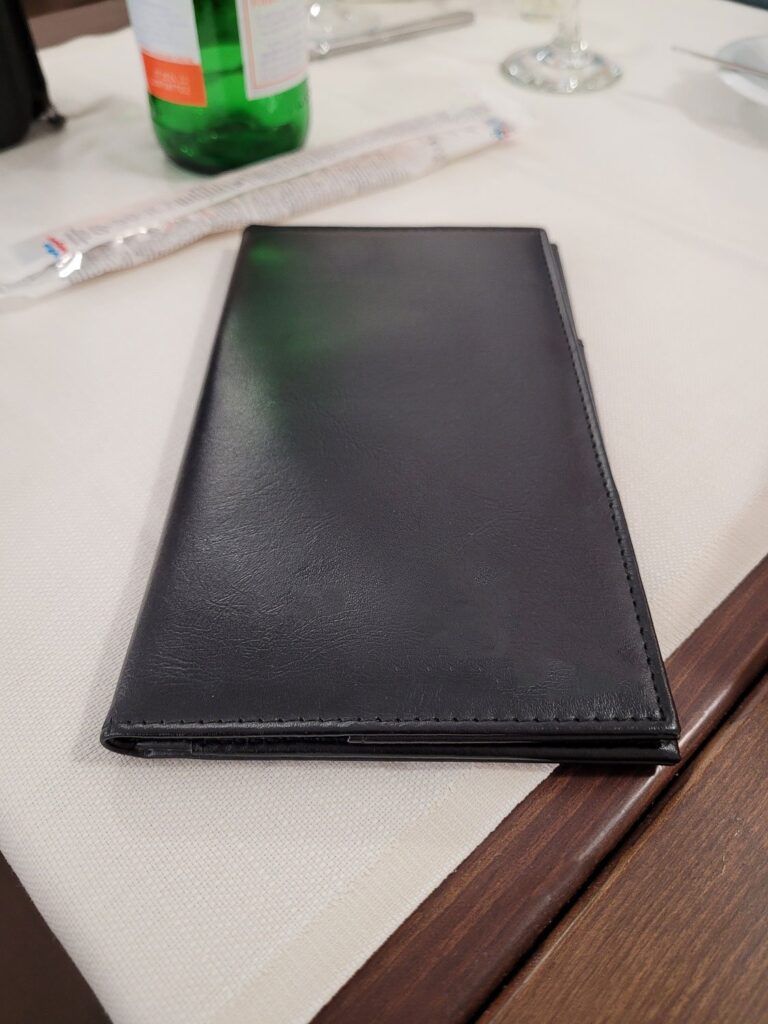The Best Neapolitan Ragù Recipe You Will Ever Make
This Neapolitan Ragù recipe is the most delicious southern Italian meat sauce you will ever want to spend all day cooking and all week enjoying the leftovers.
Finished Sauce On Pasta
This recipe for Neapolitan Ragù Recipe (Ragù alla Napoletano) is traditional, and delicious, but you will need the better part of a day to make something this amazing. The other great benefit for this recipe is that because of the long cooking time, cheaper cuts of meat should be used which makes this both delicious and economical.
What Does Ragù Mean In Italian?
Generally speaking, when a sauce is called a Ragu (Ragù) it means that it is a meat-based sauce that is typically served with pasta. The two most famous are this Neapolitan Ragu and the Authentic Italian Bolognese Sauce Recipe, which I will describe more below.
What Is The Difference Between A Neapolitan Ragù And A Bolognese?
There are two major differences between this Neapolitan Ragu recipe (Ragù alla Napoletano) and the traditional Bolognese meat sauce, known in Italy as Ragù alla Bolognese. The first difference is how the meat is used. With the Ragù alla Bolognese, you use ground beef that is cooked for a much shorter time than this Neapolitan Ragu. The second major difference is that there is no dairy in this Neapolitan Ragu, and traditionally, the Bolognese meat sauce does use a good amount of milk in its preparation.
Kitchen Tools And Cookware
We are proud to be an Amazon Affiliate, so If you are looking for some amazing products, please click on the links below as we have compiled a list of some of our favorite equipment. As an Amazon Associate, we at Saturdays In Rome earn commissions from qualifying purchases, but there are no added costs for you. For this recipe, and others, check out some of our recommended cookware and kitchen tools.
A Neapolitan Ragu Recipe Has What 4 Kinds Of Meat?
The more common meats used in this sauce are pork sausages and pork ribs. The two less common cuts are described in greater detail below, and they are the Beef Should (Chuck) and Boneless Pork Shank. These are cheaper cuts that are great for the longer cooking time necessary for this meat sauce recipe.
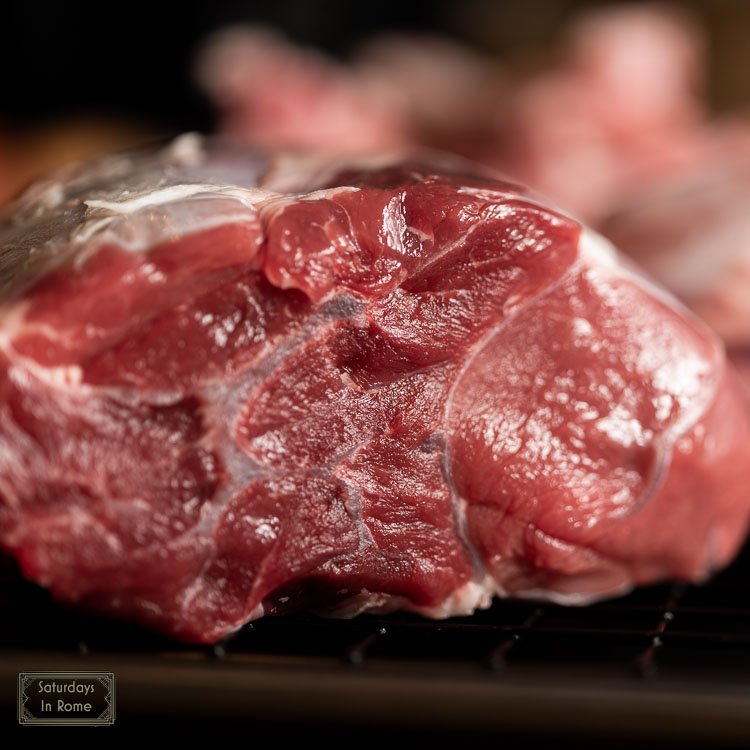
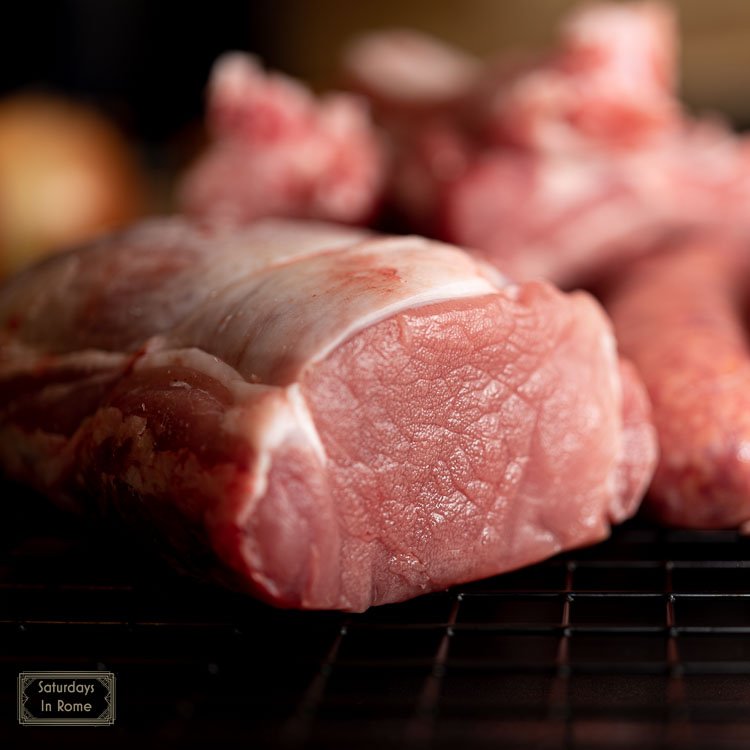
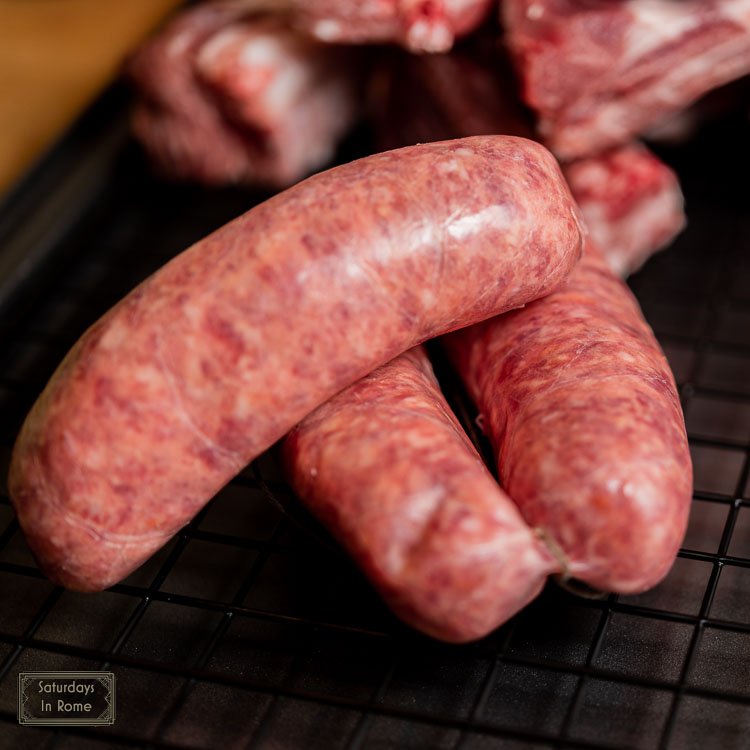
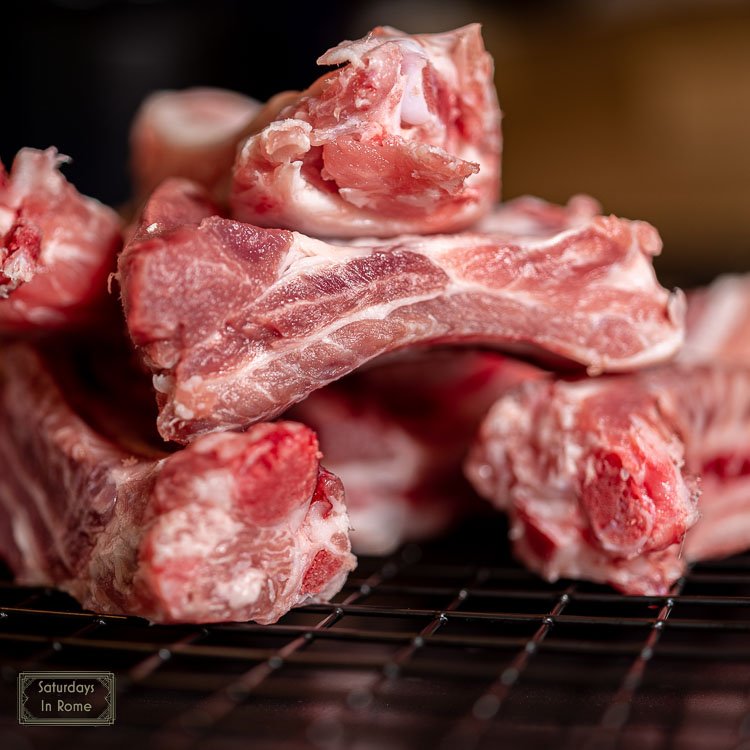
Santoku Knife
The Santoku style knife is my favorite when I’m cooking and Victorinox makes a great one!
How Do I Make Neapolitan Ragù More Flavorful?
This sauce has a ton of flavor that gets extracted from the cheap cuts of meat over the long cooking time. You could add some herbs at the end of the cooking time, but I wouldn’t recommend it. I would suggest that you add a stuffed and rolled meat, like a Braciole, during the last hour of cooking. This will bring a finishing flavor to the sauce that gets lost in the long cooking time.
What Is The Secret To A Good Ragu Sauce?
The most important element in cooking a great Neapolitan Ragu is: Time. The time is important because it extracts all the fat from the pork (fat is flavor in pork), and it breaks down all the connective tissue of the meats, other than the sausage. I know connective tissue isn’t a great name, but it has a ton of flavor, and when it breaks down, the meat will deliciously shred into the sauce.
Sauce Cooking For Hours
What Is Italian Gravy?
Let me know if you are reading this, and you disagree, but as I understand it, Italian Gravy a.k.a. Sunday Gravy is typically a meat sauce recipe like this Neapolitan Ragu that is called Gravy, but mostly in New Jersey. Everywhere else, I believe, it is called: Sauce.
Browning The Meat
I have a little experience with this from my very young childhood. We lived outside of NYC, near New Jersey, and at the time everyone I knew called it gravy, so I did as well. When we would visit family in other parts of New York, specifically Western NY, we were roundly laughed at because we called it Gravy, so to this day I’m a little touchy on this subject.
If you would like a free copy of this recipe in PDF format, please sign up for access to our Recipe Box which contains a growing list of amazing Italian recipes discussed on this blog, including this delicious recipe.
Neapolitan Ragù Recipe Key Ingredients
Dutch Oven – 5.5 Qt.
This durable French made Dutch Oven will be your favorite braising pot for a very long time.
Beef Shoulder/Chuck (Muscolo di Manzo)
The Beef Shoulder/Chuck (Muscolo di Manzo) is a cut of meat considered of little value and therefore also cheap, which is carved from the shoulder muscles. It is a very versatile cut of beef, in fact you can obtain excellent slices for steaks and rolls, stews, roasts and boiled meats. Really anything that has a long cooking time can make this meat delicious.
Boneless Pork Shank (Gallinella di Maiale)
The Boneless Pork Shank is the front forearm of the pig. This cut is tough because of how the pigs develop muscles, but it also gives the meat incredible flavor that tastes amazing, even compared to any other pork. For this recipe, the bone must be removed and the meat should fall apart during the long cooking process.
Neapolitan Ragu Recipe
- Difficulty: Easy
- Prep Time: 15 Minutes
- Cook: 7 Hours
- Servings: 8 (but it depends on how you use it)
Tomatoes
Neapolitan Ragù Ingredients
- 24 ounces (650g) Pork Ribs
- 12 ounces (300g) Pork Sausage
- 24 ounces (650g) Beef Chuck (Shoulder)
- 14 ounces (400g) Boneless Pork Shank
- 5 lbs. (2.5kg) Canned Peeled Tomatoes
- 6 ounces (150g ) Tomato Paste
- 4 ounces (120g) Onions
- 10 ounces (300ml) Dry Red Wine
- 4 Tablespoons of Olive Oil
- Salt to taste
Cooking Instructions
- In a large, tall sided pot like a Dutch oven or taller, add some olive oil on medium to high heat and brown all of the pieces of meat on all sides. Do this in bunches so that you don’t overcrowd the pan. If some of the pieces stick to the bottom, don’t worry.
- Once all the pieces are browned, return them all to the pot and pack them tightly, Tetris-style. Now, lower the heat.
- Dice up the onion and add it to the pot, and then add the wine to deglaze the pot a little bit.
- Once the alcohol from the wine has evaporated, which you can determine from smelling it, add some water to the tomato paste to dissolve it a little bit and add it to the pot.
- If you used whole peeled tomatoes, break them up a little with a fork or masher. Then add them to the pot.
- Lower the heat so that it slightly bubbles, which in Naples is called: “Pippiare”, which means to peep. Cover with the lid, but leave a little opening for the steam to escape.
- After 3 or 4 hours, add some salt. As the time goes by, add more salt, but only a little at a time while you check to make sure that it isn’t over salted as it reduces.
- After 6 or 7 hours, the sauce should look a little less vibrant red and a little browner and most, if not all, of the meat will have broken apart. Take it off the heat and let it cool a bit. When it is cool enough to be handled, remove any bones (from the ribs) and any chunks of fat, if there are any. The sauce is ready for use.
Pasta Pot with Strainer
Perfect for cooking pasta, this pot can be used to cook a range of meals you will love!
Serving Suggestions For Neapolitan Ragù
As you might expect, adding this amazing sauce to pasta is where this short rib ragu really shines. The mix of sauce and chunks of meat provides a very fulfilling meal. You can also use it in a baked dish, like a Pasta Al Forno. Lastly, and this isn’t as crazy as it might sound, you can simply grab a hunk of bread and spend time dipping the bread into the sauce with a nice dry red wine. We actually went to a restaurant in Naples and had this exact lunch and it was amazing!
Diced Onions
Previous Italian Recipes That Might Interest You
If you enjoyed this recipe for the best Neapolitan Ragù recipe you can find, here are some of my previous recipes that you might want to try:
- An Authentic Italian Bolognese Sauce Recipe.
- A Baked Ziti With Egg Recipe That Is A Perfect Combination.
- The 4 Great Recipes For Pasta In Rome.
- The Best Authentic Italian Restaurants In Rome, Italy.
- This Roman Chicken Cacciatore Recipe Is Authentic And Simple.
- This Bucatini all’Amatriciana Recipe Is A Roman Classic.
- Classic And Fresh Authentic Italian Pesto Recipe.
- Black Bean And Potato Salad Recipe You’ll Love.
- A Traditional Pasta Fagioli Recipe That Is Delicious.
- A Green Bean Frittata Recipe That Is Deliciously Simple.
- This Authentic Cacio e Pepe Recipe Is A Classic Roman Meal.

